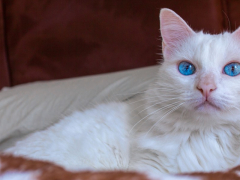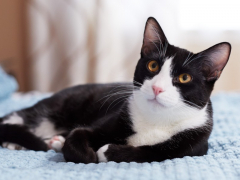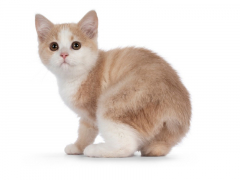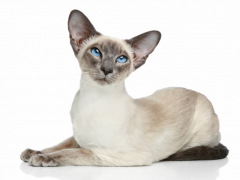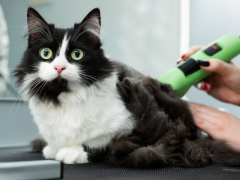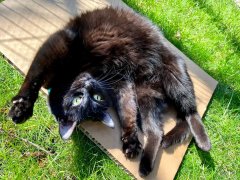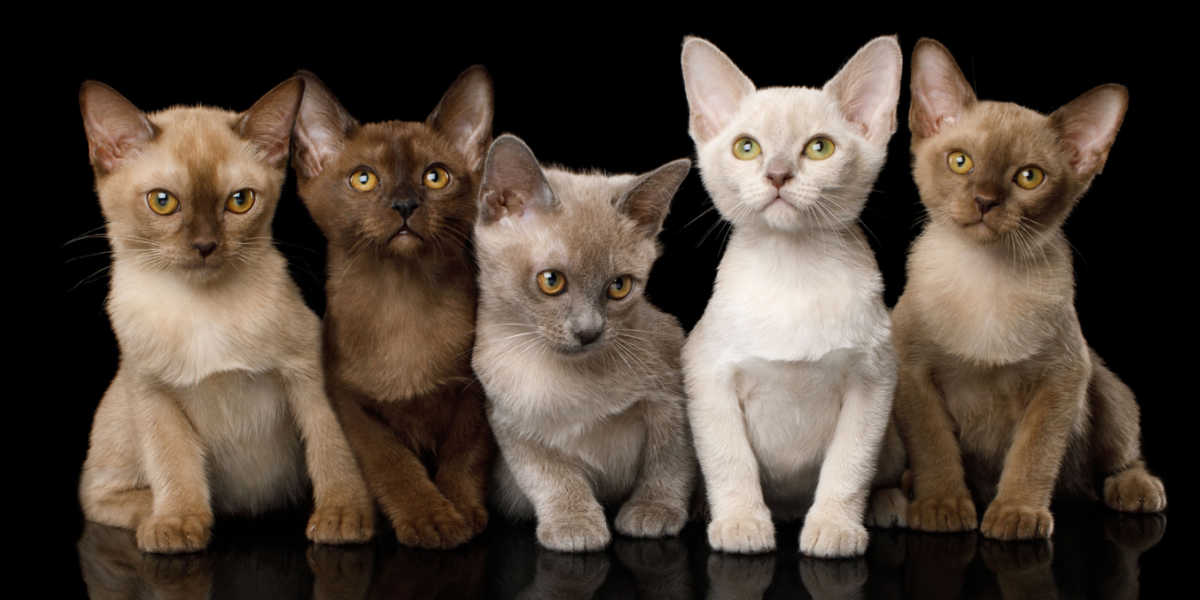
Explore the world of cats, and you’ll see a rainbow of beautiful colors and patterns, including brown, black, white, cream, gray, silver, orange, lilac, bi-colored, calico, tortoiseshell, striped, spotted, smoke, and colorpoint.
A cat’s coat color and pattern are determined by their genes. The topic of cat color genetics is extremely complex, but also fascinating! In a nutshell, different coat colors and patterns are the result of the genes a cat is born with and the way they are expressed.
Genes come in pairs, one from the mother and one from the father. Genes are either dominant or recessive. A dominant gene overrides a recessive gene; two copies of a recessive gene must be present for that trait to occur.
Some genes have slightly different forms, called alleles. An allele is simply a variation of a gene. Alleles can sometimes cause different phenotypes (observable traits), including different colors or patterns.
The two basic colors in cats are black and red, caused by the gene for black (B/b/b1) or the gene for red (O/o). Black occurs when a cat has a dominant version of the primary gene for coat color (B). Red (orange) occurs when a cat has a dominant version of the red gene (O).
Other colors such as chocolate and cinnamon occur when cats have recessive versions of the black or red gene. The black and red genes can also be influenced by other genes, causing dilated colors, such as silver, gray, blue, cream, and fawn.
#1 Chocolate (Brown)
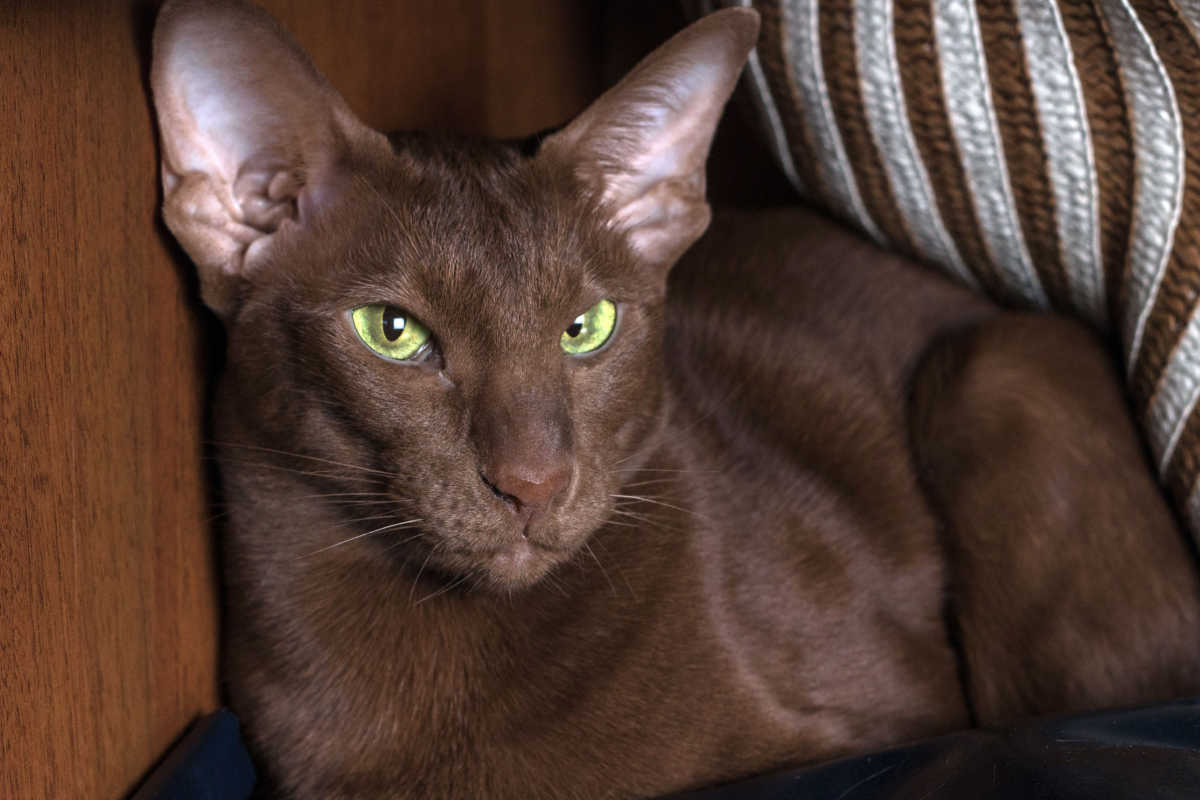
Solid dark brown occurs when cats have two copies of the recessive b gene.
The chocolate or brown color coat is encoded by the recessive allele b of the primary gene for coat color (B/b/b1). The dominant version of this gene (B) codes for black coat color, but the recessive b allele codes for brown. In order for a cat to be chocolate, they must carry two of these recessive genes (bb). Other genes influence the richness of the brown color as well as pattern of the brown coat.
Solid brown is a rare color; only a few breeds come in solid brown, including the Havana Brown, Burmese, European Burmese, Oriental Shorthair, and RagaMuffin. Brown can also appear in colorpoint breeds like the Balinese and Siamese.
#2 Cinnamon
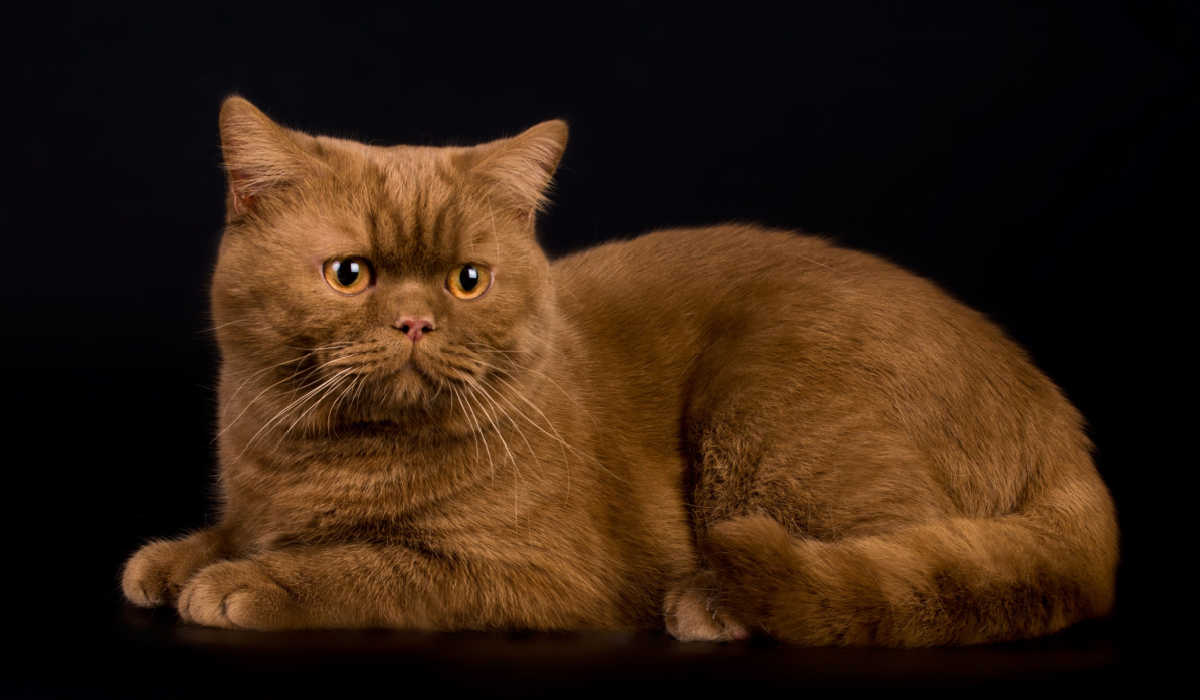
British Shorthair cats come in cinnamon, which is a warm light brown color.
Cinnamon colored cats are a warm light brown. Cinnamon cats occur when a cat has two copies of the recessive allele for black (b1/b1).
Some cat breeds that come in cinnamon include the Abyssinian, British Shorthair, Oriental Shorthair, and Ocicat.
#3 Blue
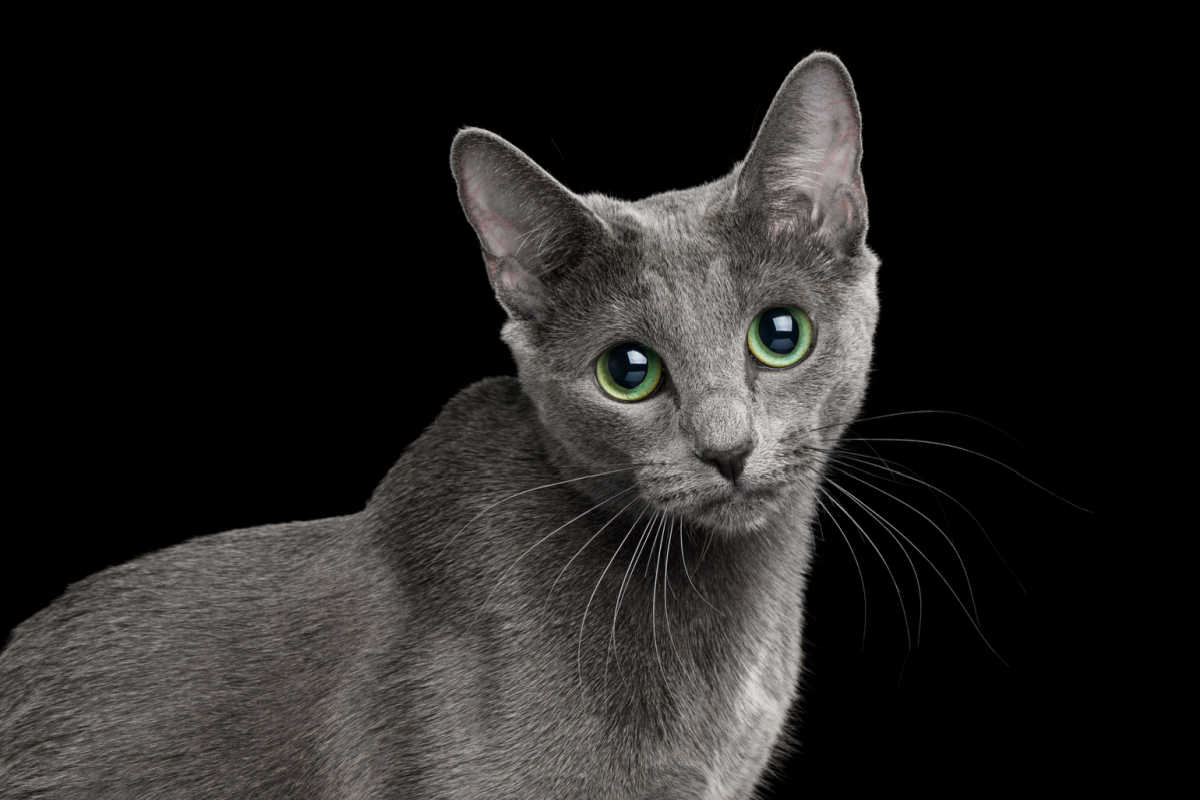
The Russian Blue is known for its blue-gray coat and vivid green eyes.
In cats, a deep gray color is commonly referred to as blue. Blue cats occur when a cat with the dominant gene for black (B) also has two copies of the recessive allele for dilute pigmentation (d/d).
The dense/dilute pigment gene (D/d) codes for melanophilin and changes how pigment is deposited, creating dilute versions of darker colors. Black becomes blue (gray), red becomes cream, brown becomes lilac, and cinnamon becomes fawn.
Some breeds that come in solid blue include the Chartreux, Korat, Nebelung, and Russian Blue.
#4 Lilac
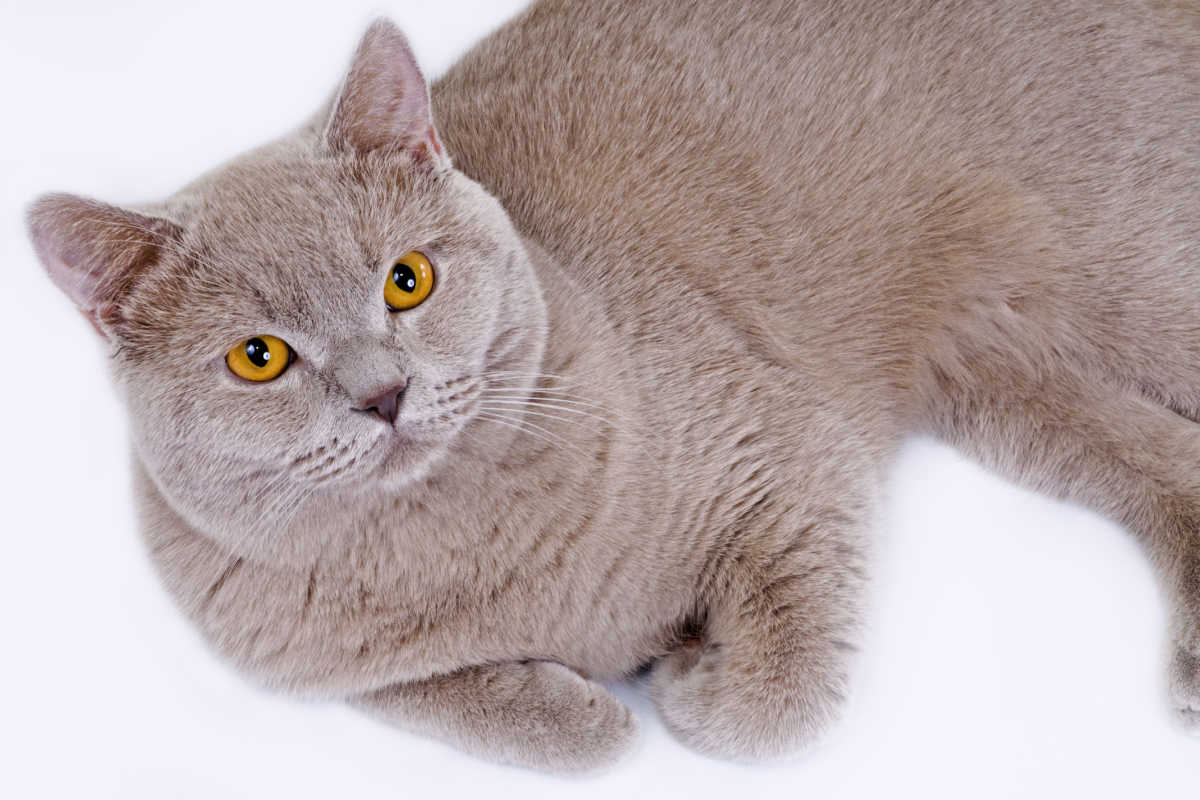
Lilac cats have very light, pale brown coloration that carries a slight purple tint. The lilac color is a dilute variation of the brown color. In order to be lilac, a cat must carry two copies of the recessive allele primary coat color, b/b, which alone would lead to a chocolate coat. But cats that are lilac also carry two copies of the recessive allele for dilute pigmentation (d/d), which affects the way pigment is deposited, leading to a diluted, or lightened, color.
Lilac can be a solid color, as seen in the British Shorthair, Burmese, Oriental Shorthair, and Persian, or a point color found in Siamese, Balinese, and Colorpoint Shorthair cat breeds.
#5 Fawn

Fawn cats can be solid colored or can have a pattern, such as these agouti-patterned Abyssinians.
Like lilac, fawn is also a version of the color brown, specifically, a diluted variation of color cinnamon, which is a warm, light brown. In order to be fawn, a cat must carry two copies of the recessive gene for primary coat color b1/b1, and is also a homozygote (two identical alleles) for the recessive dilute pigmentation gene (d/d).
Some cats breeds that come in fawn also have the agouti pattern such as the Abyssinian and Somali. Agouti refers to alternating bands of light and dark color encircling each hair shaft. Fawn cats can also be solid, as seen in the Oriental Shorthair and British Shorthair breeds.
#6 Chinchilla
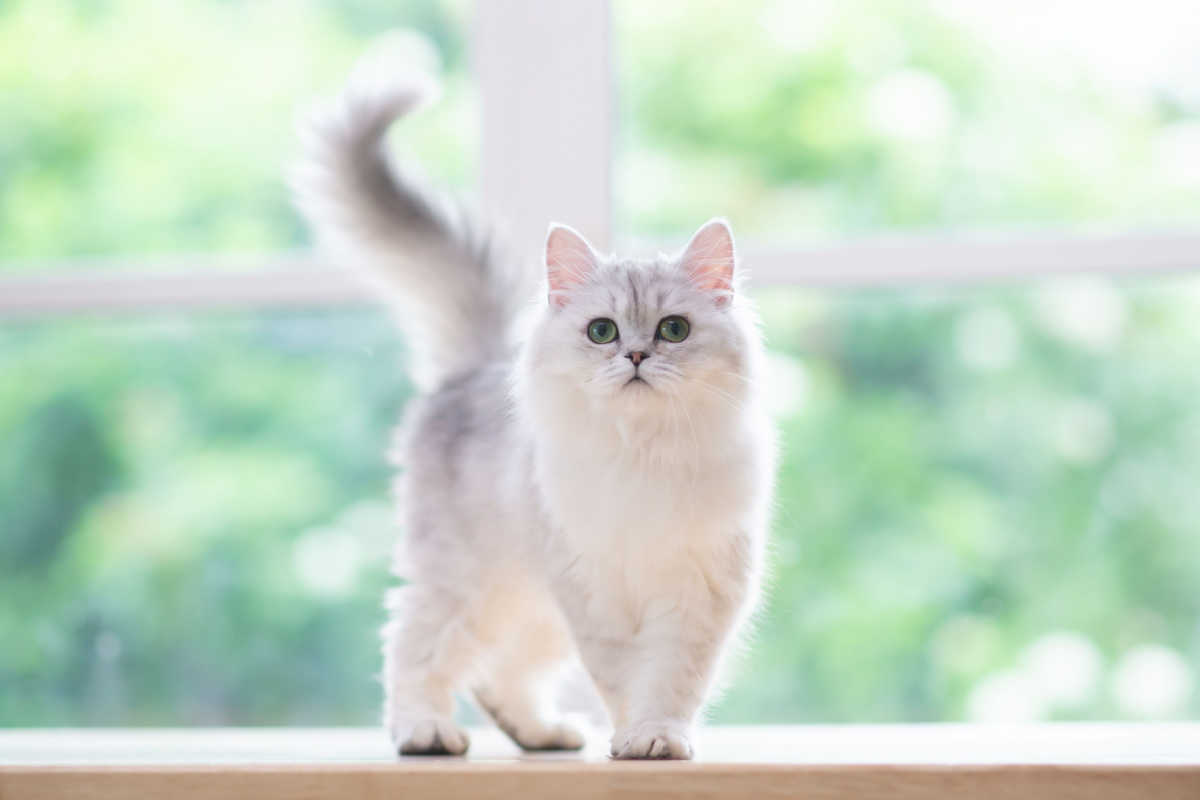
The chinchilla pattern occurs in several breeds, such as this silver chinchilla Persian.
Cats with the chinchilla coat pattern, named for the small rodent with a similar coat pattern, have a light-colored base coat with the outer edges of each hair tipped with black. In order to have the chinchilla pattern, a cat must carry the melanin inhibitor gene (I/i).
The dominant allele of this gene suppresses eumelanin production, which keeps the base of each hair light, allowing pigment only on the outer half of each hair shaft. When tabby cats carry the melanin inhibitor gene (I), they appear nearly pure white with a sparkling silver effect on the tips of the coat, creating the chinchilla pattern.
The chinchilla coat pattern is found in a few breeds, including the British Shorthair, Persian, and Siberian. Chinchilla Persian cats may be silver, golden, or blue, as well as combinations of these colors. Silver chinchilla cats are white at the base with black tips. Golden chinchillas have a honey- or apricot-colored base coat with black tips. Blue chinchillas have a white base coat tipped with blue rather than black.
#7 Smoke
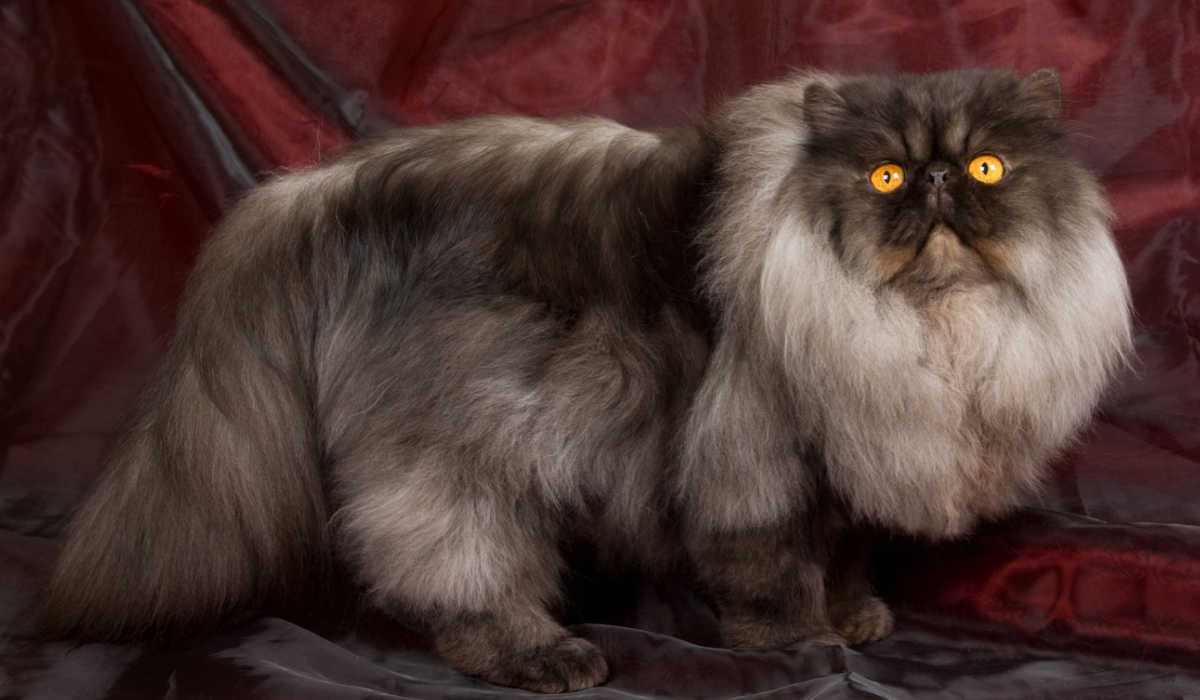
If you were to part the hair of this black smoke Persian you would find white hair at the base of the coat.
The smoke cat color pattern is a solid color that’s white at the roots, which causes a unique effect reminiscent of swirling smoke. The white color at the base is generally hidden beneath a primarily black coat.
In order to display the smoke pattern, a cat must have the dominant allele of the primary gene for coat color (B), and must also have two copies of the recessive allele for the dense pigment gene (d/d) and a copy of the dominant melanin inhibitor gene (I).
Black smoke colors are rare but most likely to occur in the Maine Coon, Norwegian Forest Cat, Persian, Turkish Angora, Egyptian Mau, and Siberian breeds.
#8 Rosette Pattern
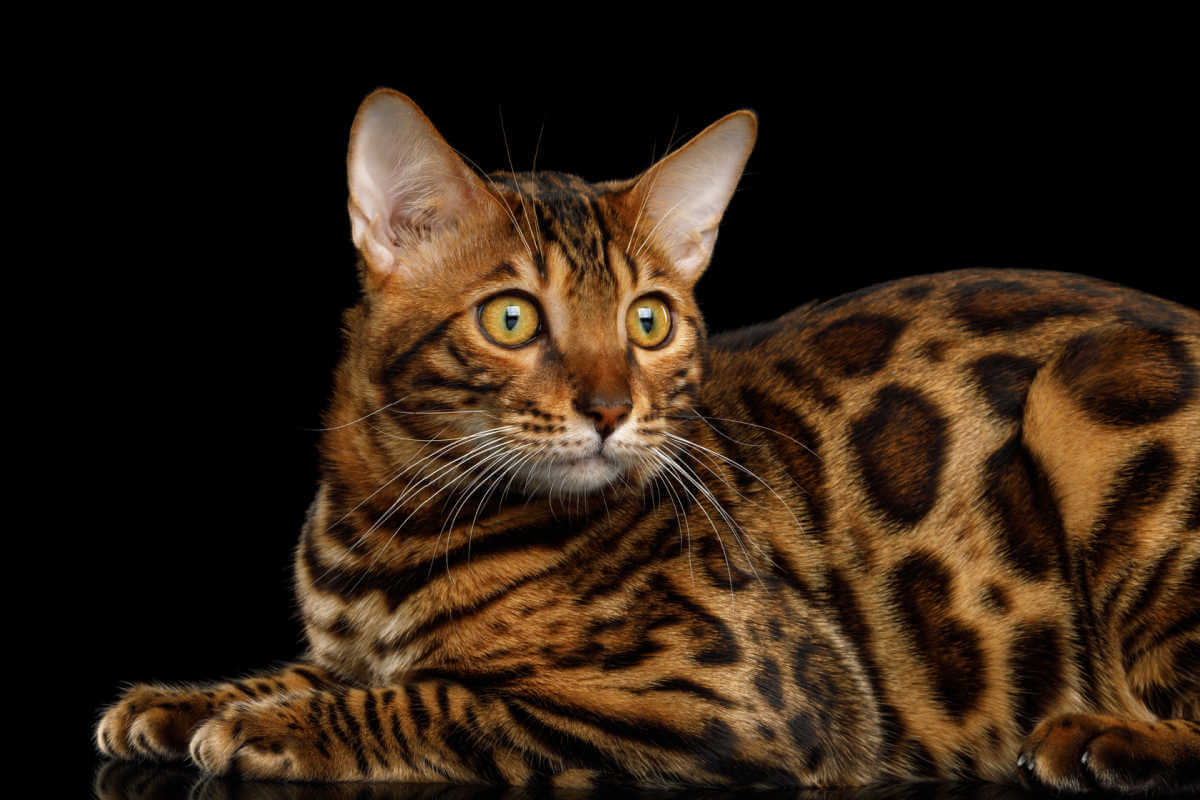
The rare and desirable rosette pattern that occurs in Bengal cats resembles the spots found on wild cats.
The rosette pattern is one of the most unique of all cat coat patterns. Rosettes are two-toned spots with contrasting colors that stand out against the lighter background color of the coat. The rosette pattern, also known as a spotted tabby pattern, is a rare variation of the agouti pattern, which is the ticked tabby pattern seen in the Abyssinian.
Rosettes are highly desirable in some breeds meant to resemble wild cats, such as the Bengal and Serengeti cat. Rosettes come in several shapes, including arrowhead, pawprint, and donut.
#9 Albino
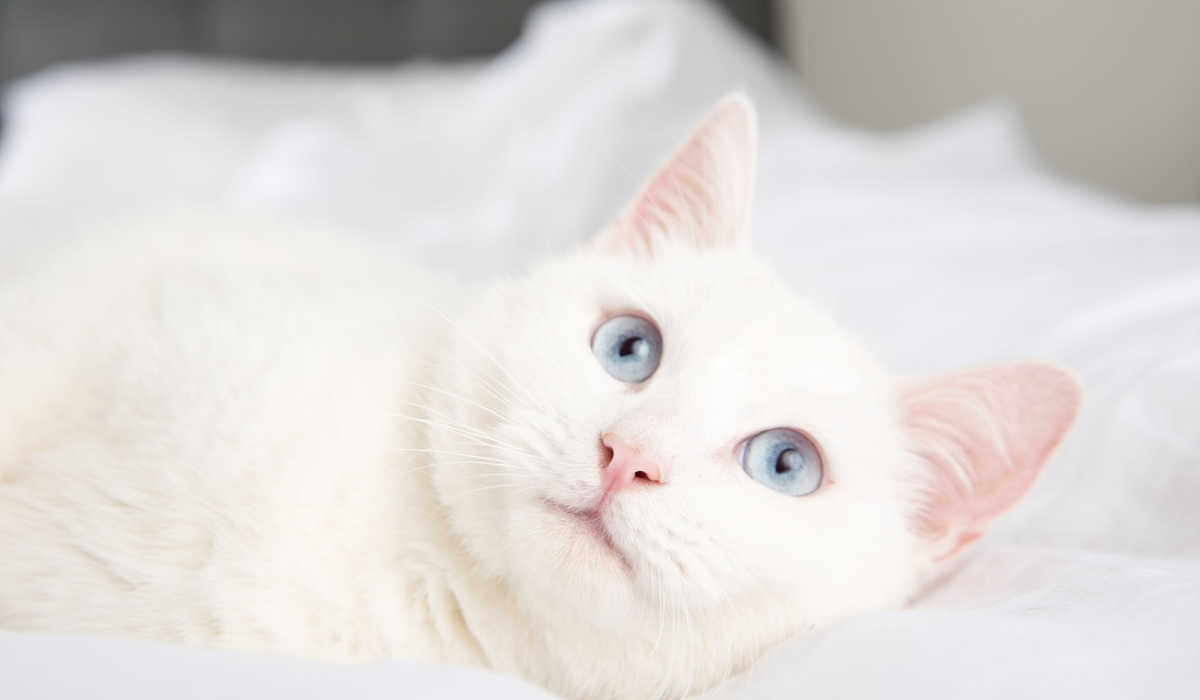
Albinism is caused by a complete lack of pigment, resulting in a white coat and blue eyes.
The albino cat is the one of the rarest cat colors. It’s important to know that not all white cats are albinos. In order to be albino, a cat must inherit two copies of the autosomal recessive allele for albinism (A/A).
The recessive genes for albinism mean albino cats don’t produce melanin, so they have no pigmentation. Their skin is pink, their fur is white, and their eyes are pale blue or pink. Albino cats are sensitive to light and prone to sunburn. Some might also experience hearing difficulties or deafness.
#10 Colorpoint
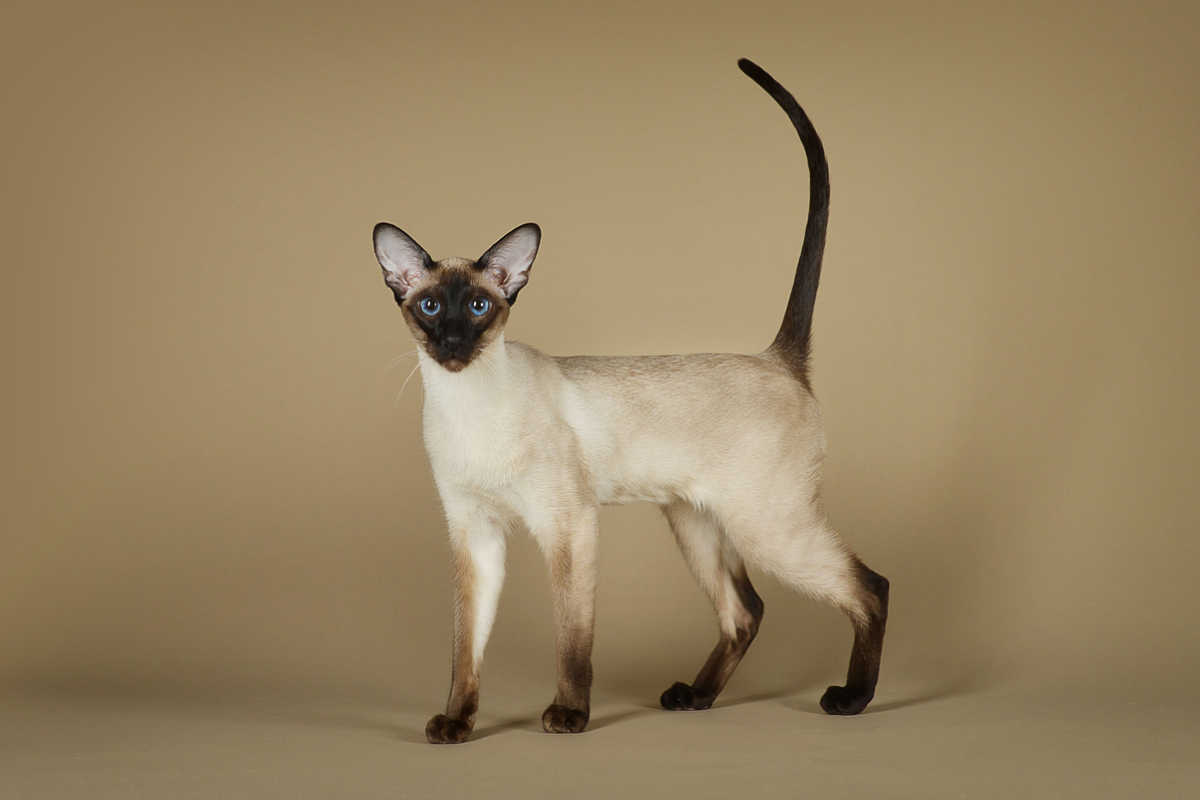
Pointed cats such as this Siamese have light-colored bodies with points of color on the extremities.
The colorpoint pattern is found in the Siamese and related breeds, including the Balinese, Birman, Colorpoint Shorthair, Himalayan, Javanese, and Ragdoll. Colorpoint cats have a light-colored body with “points” of color on the extremities, including the head, legs, and tail. T
Traditional Siamese point colors are solid seal, chocolate, blue, and lilac. Other breeds include more point colors, such as flame point (red) and cream point, as well as various pointed patterns, such as lynx and tortoiseshell. In pointed cats, the patterns appear within the points only (the body is a solid colored).
#11 Tortoiseshell
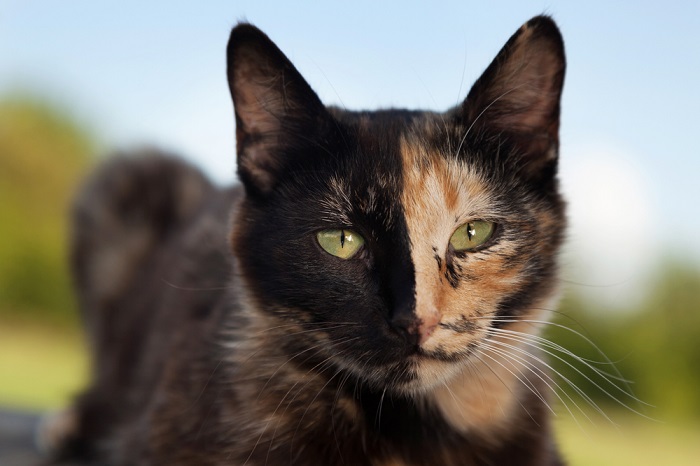
Tortoiseshell coats are a combination of black and red, with each cat displaying their own unique pattern.
Tortoiseshell colored cats, or “torties,” have coats that are a combination of red and black colors in a mottled, patched, or swirling pattern that is unique to each cat.
Depending on the specific genes a cat has, including whether the cat also carries two copies of the recessive allele for dilute pigmentation (d/d), the two colors of the tortoiseshell coat might might appear as black, gray (blue), red, orange, gold, or brown.
Many breeds and mixed breed cats can be tortoiseshell, but this color pattern sex-linked, so torties are almost always female. Tortoiseshell cats are said to feisty and full of character, a reputation that inspired the word “tortitude.”
#12 Cream
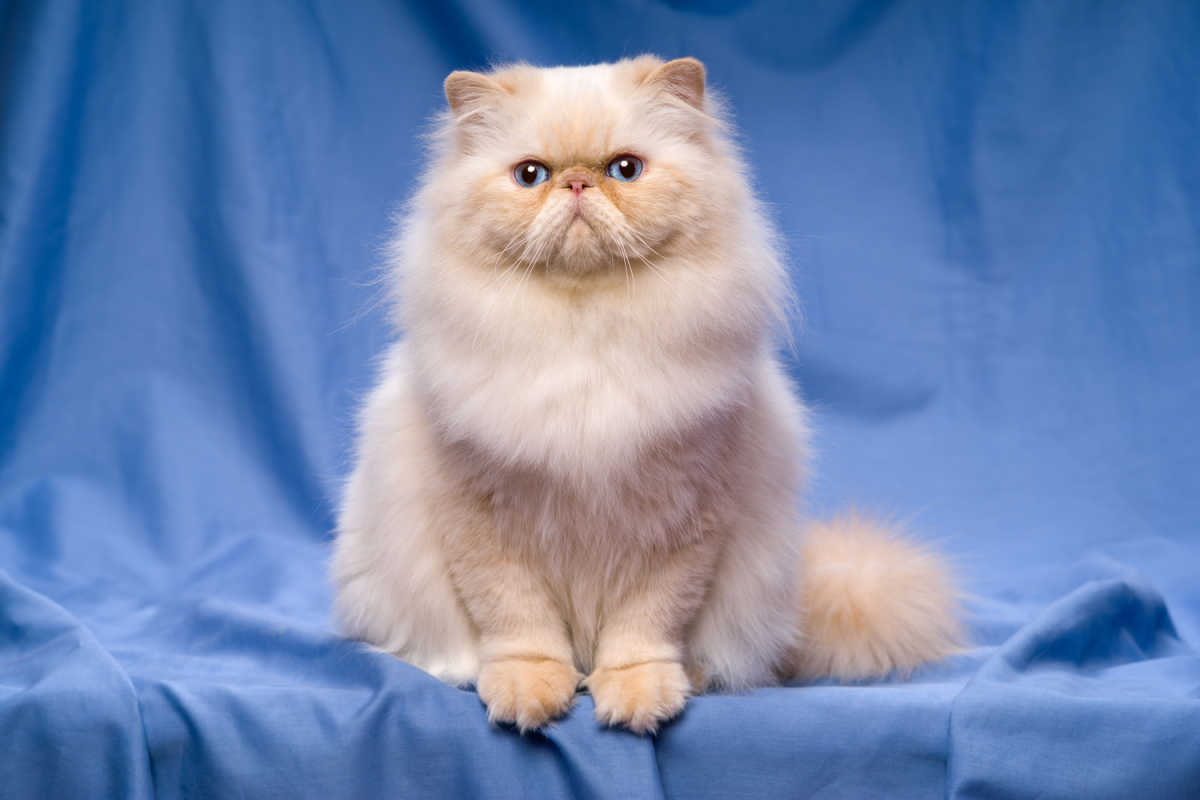
Cream-colored cats are very pale orange. In order to be cream, a cat must carry the dominant allele of the red gene (O), as well as two copies of the recessive allele for the dilute pigment gene (d/d), which dilutes the red to a very pale cream.
Although the color is rare, many breeds come in cream, including the American Shorthair, Devon Rex, Maine Coon, Persian, and Selkirk Rex.
Rare Colors and Patterns: Final Thoughts
Now that you know the basics of cat color genetics, you can appreciate how cats come to inherit some of the rarer coat colors and patterns. We’ve explored some “common” rare colors and patterns, but cats come in many more rare colors and patterns. Some, like torbie, are a combination of two patterns (tortoiseshell and tabby), and others are seen in just one breed, like the black grizzled tabby pattern of the Chausie. In cats, the color and pattern possibilities are vast, and exploring these is part of the fun of learning about cats.
-
https://vgl.ucdavis.edu/resources/cat-coat-color
-
https://vgl.ucdavis.edu/test/albino-cat
-
https://basepaws.com/blogs/news/top-10-rarest-coat-colors-and-patterns-in-cats
-
https://www.kyhumane.org/black-cat-myth/
